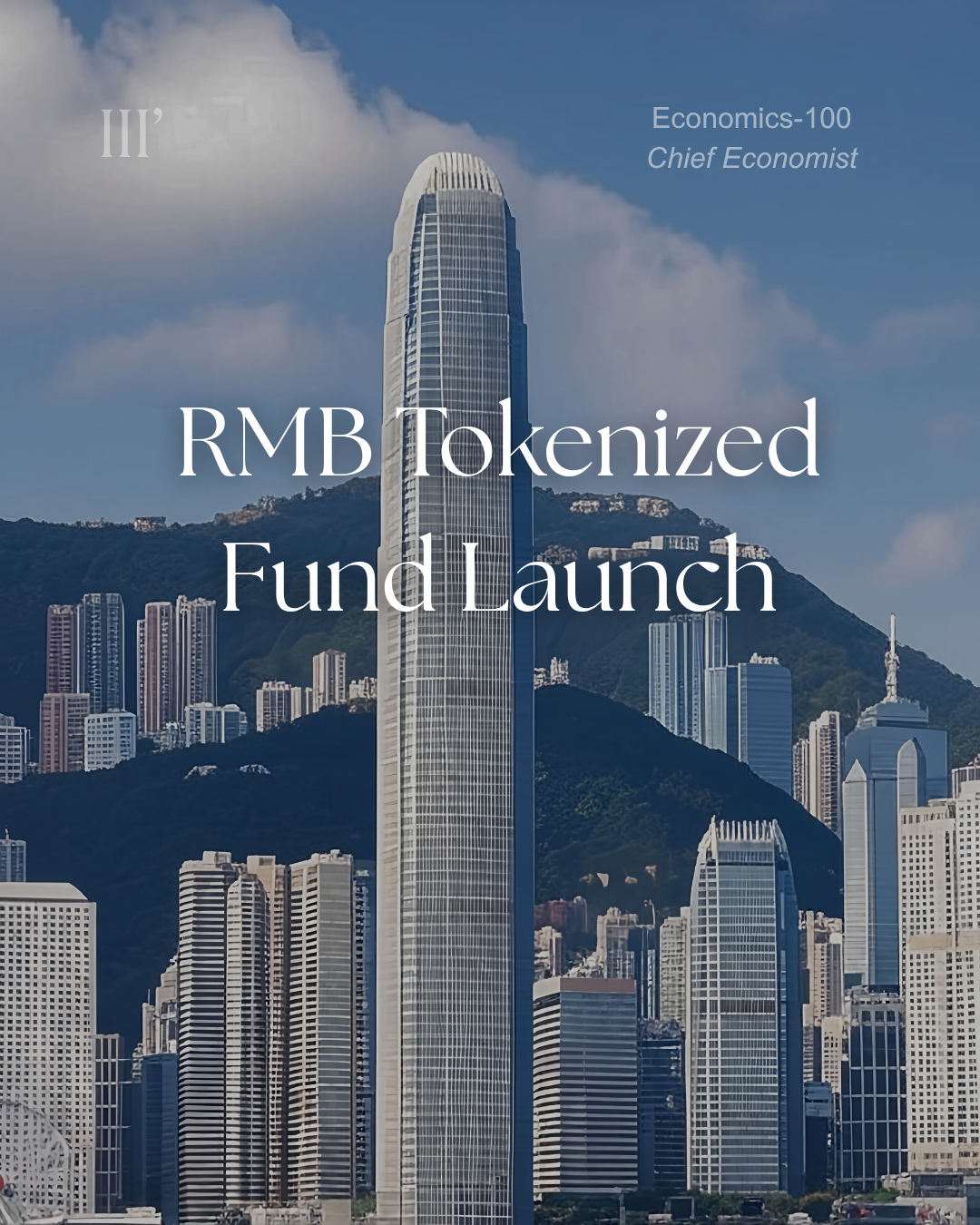On July 17, 2025, the Hong Kong arm of China Asset Management (ChinaAMC), China’s second-largest fund firm, launched the world’s first renminbi (RMB)-denominated tokenized money market fund.
Economics 100, Chief Economist:
Executive Summary
On July 17, 2025, China Asset Management (Hong Kong) launched the world’s first RMB-denominated tokenized money market fund, a landmark in both China’s financial innovation and the broader evolution of tokenized finance. This move positions China at the intersection of digital asset infrastructure and currency internationalization, allowing global investors to gain blockchain-based exposure to RMB assets. Strategically, this aligns with China’s long-term goal of reducing global reliance on the U.S. dollar (USD) while leveraging technology to bypass traditional Western-dominated financial pipelines.
Comparative & Historical Context
Tokenization—turning real-world assets into digital tokens on a blockchain—has gained traction in the U.S. and Europe, especially for treasury bills and private credit, but it has been predominantly USD-denominated and regulated by Western financial hubs like Switzerland and Singapore. In contrast, this RMB-denominated tokenized fund represents a monetary-technological pivot by China. It follows earlier trends like Hong Kong’s support for tokenized green bonds (2023–2024), but this fund marks the first major push into retail-facing, high-liquidity RMB tokenized products.
Historically, central banks have sought to internationalize their currencies through trade invoicing and SWIFT messaging system participation. By skipping ahead to a token-based infrastructure, China avoids legacy chokepoints (e.g., SWIFT, Euroclear) and moves into a digital asset future where value can be transacted peer-to-peer, outside of U.S. surveillance systems.
Strategic & Relative Impact
- China’s Advantage:
This development strengthens Beijing’s “Digital RMB Belt and Road” ambitions. By tokenizing RMB assets, China makes the renminbi more globally accessible, liquid, and programmable—three key factors for currency internationalization in the digital age. It also supports the offshore renminbi market in Hong Kong, deepening its role as China’s international financial laboratory. - Global Asset Managers & Investors:
Institutional investors seeking non-dollar exposure, especially from emerging markets and crypto-native funds, now gain a direct, digitized path into RMB-denominated money markets. This could reduce their dependence on USD-denominated stablecoins and treasuries, particularly amid geopolitical and inflationary hedging pressures. - U.S. and Western Financial Institutions:
The move subtly undermines U.S. dollar dominance in tokenized asset markets. While Western regulators are still cautious, China is effectively exporting its financial infrastructure, reminiscent of how Huawei exported telecom networks. This tokenized fund could become a gateway for Chinese CBDC ecosystems or cross-border settlements in RMB, challenging USD-based rails like Fedwire or CHIPS.
Unintended Consequences & Risks
- Regulatory Arbitrage:
Hong Kong, though under China’s sovereignty, retains relatively liberal financial laws. However, Western governments may grow suspicious of tokenized RMB funds becoming vehicles for sanctions evasion or capital circumvention, especially by crypto-native actors operating beyond the G7 financial perimeter. - Surveillance and Data Control:
While tokenization brings efficiency and transparency, if these products integrate with China’s broader digital yuan (e-CNY) ecosystem, privacy and data localization risks emerge for international investors. Western capital allocators may hesitate, given concerns over state surveillance and legal recourse. - Liquidity Fragmentation:
Introducing RMB-denominated tokenized funds without corresponding global clearing infrastructure could lead to liquidity silos, where fragmented pools of capital exist in parallel but not interoperably with USD tokenized markets.
Final Insight & Steering Caution
This launch is not merely a financial product innovation—it is a geoeconomic signal. It reflects Beijing’s attempt to redefine the architecture of global capital flows through programmable finance and digital sovereignty. Yet while the technical infrastructure is rapidly evolving, the trust architecture (governance, dispute resolution, convertibility) is far from resolved.
For investors and policymakers, the key lies in understanding this as part of China’s long-term de-dollarization and technological sovereignty strategy—not just a new fund offering. As tokenized assets increasingly represent sovereign intentions, the lines between finance, technology, and geopolitics will only blur further.
“Money is not neutral in international affairs—it is power digitized.”
— Robert Triffin, paraphrased through the lens of programmable currency systems
Economics 100, Chief Economist
Three Corporate
